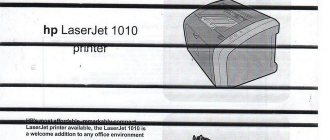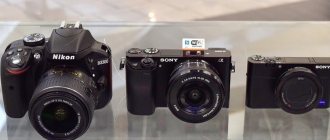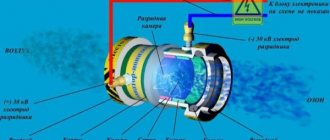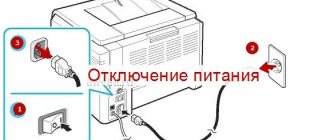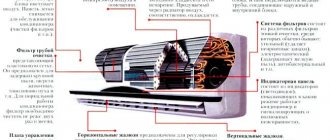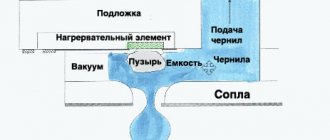Inkjet or laser? You have already faced this question if you decided to buy a printer. Or you will collide when the time comes to choose.
Here we look at the types of printing: each solution has obvious advantages and hidden disadvantages, undeniable advantages and debatable disadvantages.
We choose a printer using the example of Epson, which has options for home and office use: black-and-white with a long resource, four-color and multifunctional devices, photo printers, and so on.
Two different printing principles:
How laser printers work
The laser beam creates areas with an electrical charge on the surface of a rotating photodrum filled with a special powder.
It is these areas that attract toner, which acts as paint.
A sheet of paper is pulled through the printer shaft, to which the toner collected into a specific image is attached. And a special oven bakes the powder at a temperature of 200 degrees so that it simply does not crumble.
How do inkjet printers work?
Inkjet printers print using ink, which can be applied to paper, fabric, film, or other surfaces.
This happens using a special print head that moves across the material. On its surface there are microscopic holes (nozzles), through which the paint enters the paper and is absorbed into its top layer.
The role of paint is special ink, which today is available in cartridges, bottles and other containers.
How a laser printer works
At the time of writing, this type of printer allows you to produce very high-quality printing of both text and graphics. The laser printer can confidently be called the crown of creation in printing technology. Nothing better has yet been invented for home and office! The operating principle of this type is xerographic and much more complex than its predecessors.
Printing is done using a laser beam. It forms an image on the photo drum using toner powder. The photo drum rolls over the paper and leaves an image on it. To fix the picture on paper, the sheet is run through the stove. A cartridge is also used here, only instead of ink it is filled with toner.
Which is cheaper?
Printers
Today there is not much difference between the cost of laser and inkjet printers. The price of the device itself depends only on the brand and set of technical characteristics. Of course, laser color devices are many times more expensive than inkjet ones.
By the way, only in 2009 the Supreme Court abolished the mandatory registration of color copiers and printers with the police. Did not know? In 1994, Prime Minister Viktor Chernomyrdin signed a decree to combat counterfeiters and other scammers.
Interestingly, the owners of color printing devices were required to keep records of all copies and printouts indicating their brief content. And the police could freely enter even residential premises where “dangerous equipment” was located.
Therefore, in addition to the high cost, purchasing a color printer was associated with additional difficulties.
Paint and consumables
Most modern printers (both inkjet and laser) are sold with installation cartridges. The resource of such a cartridge is strikingly different from those sold separately.
It is assumed that the resource of such a cartridge is quite enough to show the quality of printing. But an additional set of cartridges will definitely cost a pretty penny. It is not for nothing that ink for inkjet printers was considered one of the most expensive liquids in the world. Moreover, even a “full-size” cartridge was enough for a couple of hundred pages.
This was the case until large companies began to equip CISS inkjet printers instead of conventional cartridges. A continuous ink supply system is a container into which ink is poured, and through a system of loops it reaches the print head. Epson was the first to release such a solution in 2011 and called these printers “Print Factory”.
“Print Factories” are sold complete with a set of full-size ink bottles – 70 ml each. By the way, the average volume of a standard cartridge is about 7 ml.
At a cost of 989 rubles (per jar for the 6-color “Factory”) and 495 rubles. (for a 4-color “Factory”) for 70 ml - one ml of ink costs 14 and 7 rubles. respectively. The price for 1 ml of ink in cartridges ranges from 195 to 268 rubles. These 70 ml are enough for 11 thousand pages.
Consumables for laser printers are a little more complicated: a toner cartridge for a laser printer lasts from 1500 to 3-4 thousand copies. And although this is also not small, in addition to the toner cartridge, you need to periodically change the expensive photoconductor, oven, etc.
Officially, toner cartridges are not refilled, but a couple of times craftsmen can do this using a makeshift method.
After this, you will still have to buy a new entire cartridge or at least a drum to replace the worn one. Bottom line: since inkjet printers do not have photoconductors and other expensive components, their maintenance will cost up to two times less than laser solutions. Of course, only if we are talking about devices with CISS.
Price
Another difference between an inkjet printer and a laser printer concerns the price range.
Jet technology. Considered cheaper. Despite this, you get compact equipment for creating cool and juicy photos. However, in the long term, exploitation no longer seems so rosy. After all, cartridges are designed for a small amount of ink, are quite expensive, and quickly become empty.
Some of the ink is wasted on cleaning the nozzles, while some may not be used at all. This happens if one color is finished, but the second is not yet available. But you have to change the entire cartridge.
The plus is that the producers have found a way out. And it is called CISS. This is a continuous ink technology based on cartridges and capsules. It looks like several reservoirs connected to each other by a special cable with cartridges or capsules located on the print head. If you run out of one color, you just need to refill it. There is no need to change the entire structure.
Laser technology. Usually costs more than inkjet. But models with CISS can be comparable in price, since the equipment has a more complex structure, lasts longer, and saves paint.
Standard cartridges are designed for 700-40,000 sheets. Therefore, the cost of the equipment is easily recouped due to the fact that the toner lasts for a long time.
For example, you need to print 20 pages per day, 600 per month. The resource of a regular cartridge is enough for 700 sheets. Most inkjet equipment will require replacement after a week and a half, since the standard cartridge is designed for 180 prints.
Who is faster and who has better quality?
Speed: marketing versus reality
It is impossible to definitively answer the question of which printer prints faster: laser or inkjet.
The fact is that the direct printing process is faster with laser printers. However, they take a very long time to “start” - to do this, they first need to preheat the toner baking oven.
Statistics say that most documents when printed do not exceed three pages. An inkjet solution can handle this amount faster. If more - laser.
Quality: text, pictures and photos
If we are talking about printing diagrams and drawings, both laser and inkjet solutions can handle them equally well.
With black and white and color images it is more difficult. For laser printers, the resolution does not exceed 2400 DPI, while for inkjet printers it reaches 5760 DPI and higher.
On the left is a laser. On the right is jet.
Moreover, the former usually use only four colors (don’t forget about the cost of consumables for laser printing and their service life), while the latter can have six or more - this affects the quality of the rendering of shades and halftones.
You should also note that standard photo paper for printing pictures, which is sold on almost every corner, is not suitable for laser printers. Due to the high heat, it will simply melt. Therefore, you need to look for a special one.
Does it dry or not?
It's no secret that one of the main concerns when buying an inkjet printer is the ink drying out on the print head. Fortunately, as with cell phones, today's inkjet printers are not what they were a decade ago. Down with the wires, give us a touch screen.
The same applies to the technology itself - if light stripes appear on the print, in printers of the “Print Factory” series, just run “Print Head Cleaning” through the menu, the printer itself will perform the necessary procedures.
Although still: placing the printer near the battery is not recommended. But printing one page at least once a month is really necessary.
Ink color factor
Let's consider an aspect that may influence finding the answer to the question of what is better - a laser or inkjet printer in relation to the user's tasks. The fact is that the ink and toner used in devices can be color or black and white. But the printer itself can only support some of them. This can be a significant factor in whether you buy a black-and-white laser printer or a color inkjet printer, for example. And that's why.
Many IT specialists believe that the classification of printing devices into “laser” and “inkjet” is not detailed enough. The fact is that both printers can be legitimately divided, in turn, into a large number of subtypes. The basis for the corresponding additional classification will be the color of the ink. Above, we determined how a laser printer differs from an inkjet printer in key points. Now let’s try to study what a more detailed classification of devices within one technological type could be.
Say a word about the benefits and harm!
When using laser printers, many users experience an unpleasant odor because harmful substances are released into the air when the toner bakes on the paper.
If you print rarely, then there is nothing wrong with that. But in order to avoid nausea, dizziness and other negative consequences for the body, it is better to work with laser printers in well-ventilated office areas.
But if there are schoolchildren and students in the family who often have to print, it is better to choose an inkjet printer with environmentally friendly inks. The only danger here is in their use - if you drink them, you may experience an upset stomach with all the ensuing consequences. Therefore, it is better to keep them out of the reach of children and not experiment with them yourself.
Choosing a printer for home and...office
I advise you to throw away prejudices from the past and look at inkjet printers...
Why inkjet printers with CISS are better:
- service price is up to two times lower
- safe to use
- you can print photos (resolution 5760 DPI versus 2400 DPI)
- The first page prints faster
- versatility: text, pictures, photos and so on
...or the same multifunctional devices (printer-scanner-copier).
So, if you are not going to print photos or are simply choosing an assistant for the office, take a closer look at the monochrome “Factory” . The starter ink set is enough for 11,000 pages. And if necessary, the black and white photos on it will turn out quite good, the print resolution is not bad.
If you choose only color solutions, the “Print Factory” series has 4- and 6-color printers . Four-color ones are suitable for printing documents and photographs; six-color ones are better for printing halftones and shades in photographs.
For medium-sized printing volumes, solutions for small workgroups , which are economical and have separate high-capacity cartridges with a resource of 10 thousand A4 sheets or 4 thousand A3 sheets. And all this without loss of quality.
And for maximum printing volumes, you need options for large workgroups , one set of ink in which is enough to print as many as 75 thousand pages. Such an impressive supply will suit even the most demanding.
There are only four modern options that will suit anyone. Choose wisely!
( 51 votes, overall rating: 4.57 out of 5)
